Abstract
Cells in different parts of the cell cycle can be separated by brief centrifugation in a density stabilized gradient: the Mitchison-Vincent technique. The position of a cell in the tube depends upon its size, shape, and density, upon the gradients of density, viscosity, and centrifugal force through which it sediments, and upon time. A program to compute the velocities and integrate the velocity profile for particles of a particular size class is presented. Because enteric bacteria are a form intermediate between right cylinders and prolate ellipsoids of revolution, the program uses values for the frictional coefficient intermediate between those calculated for ellipsoids and for cylinders. The formula f=6pietab(a/b)1/2 possesses this property and because of its simplicity greatly speeds the calculations. A second program computes the distribution of masses and then of sedimentation constants for a bacterial population, expressed either as a frequency distribution or as total mass per s-class. The effect of the known variation in cell size at division is included in these calculations, which apply to organisms undergoing balanced, asynchronous growth in which mass increase is proportional to cell size. The two programs in conjunction compute the mass or cell-number profile in an arbitrary gradient. The programs have been used to design gradients to maximize the resolution of the technique.
Full text
PDF
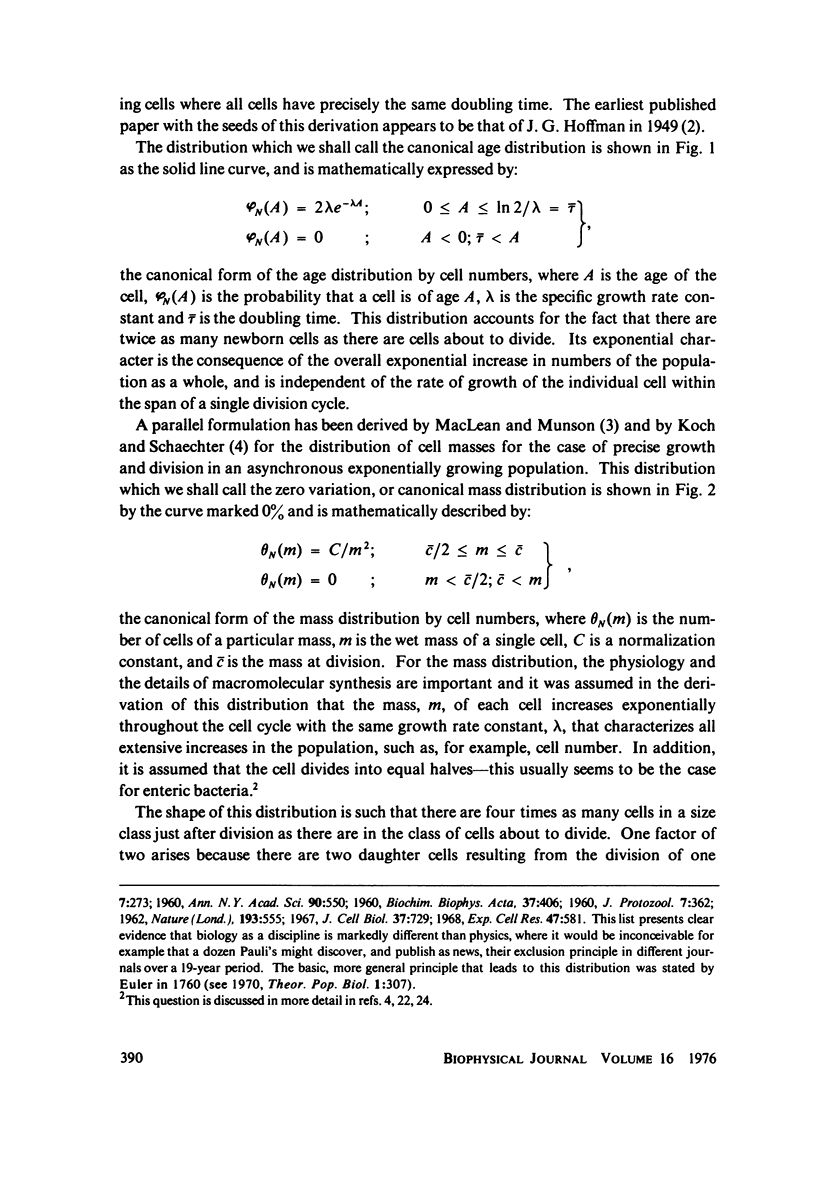




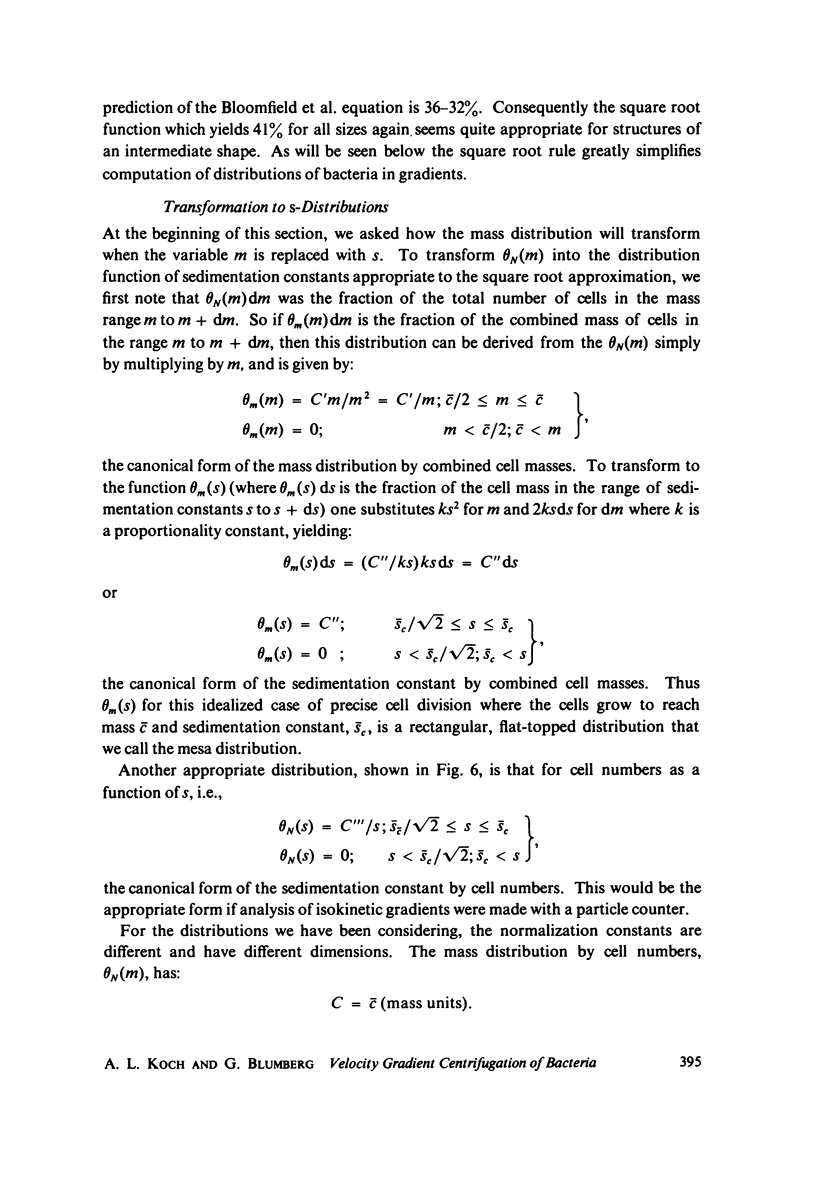


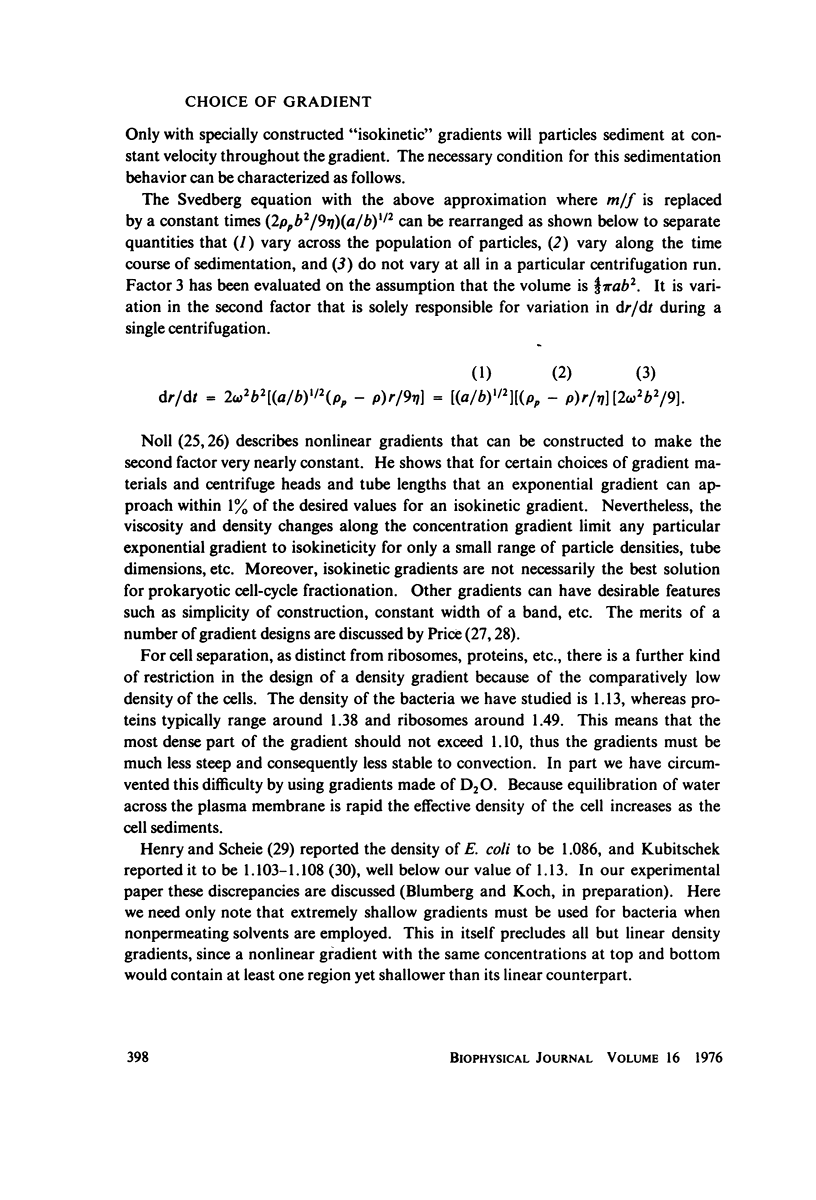



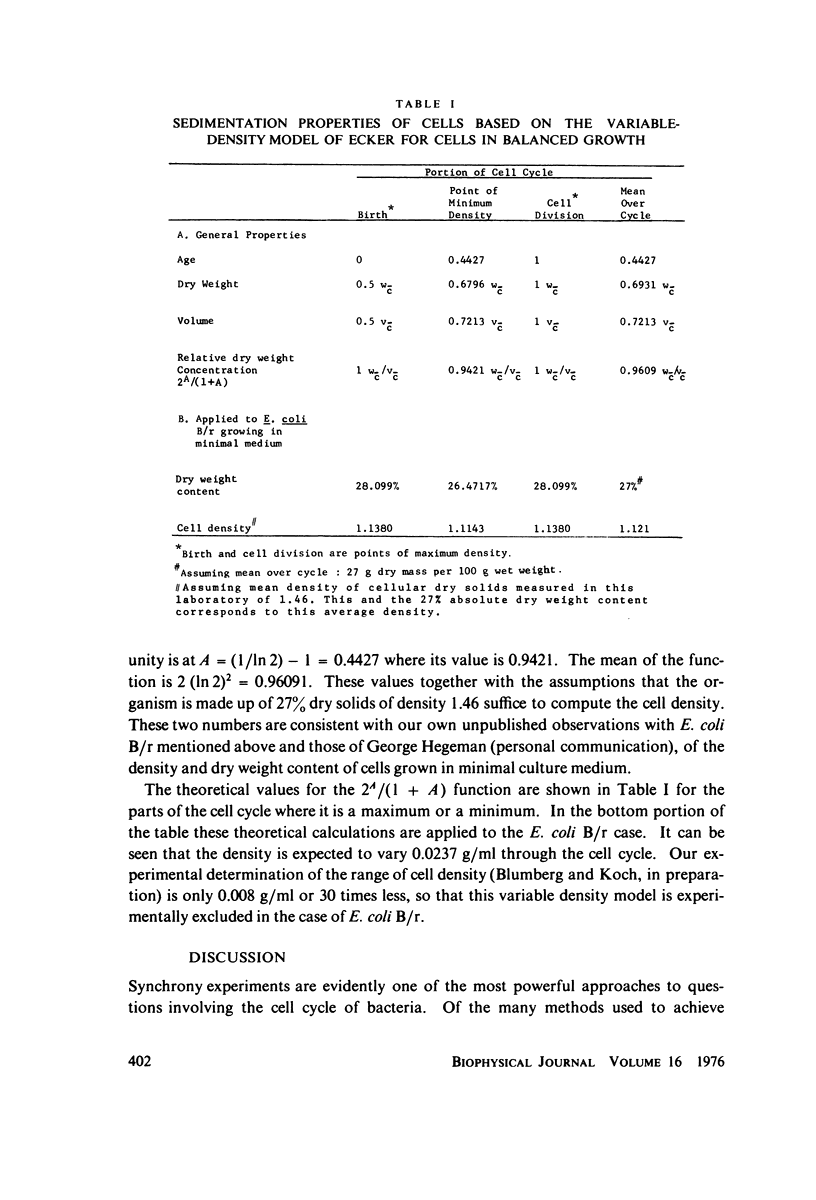
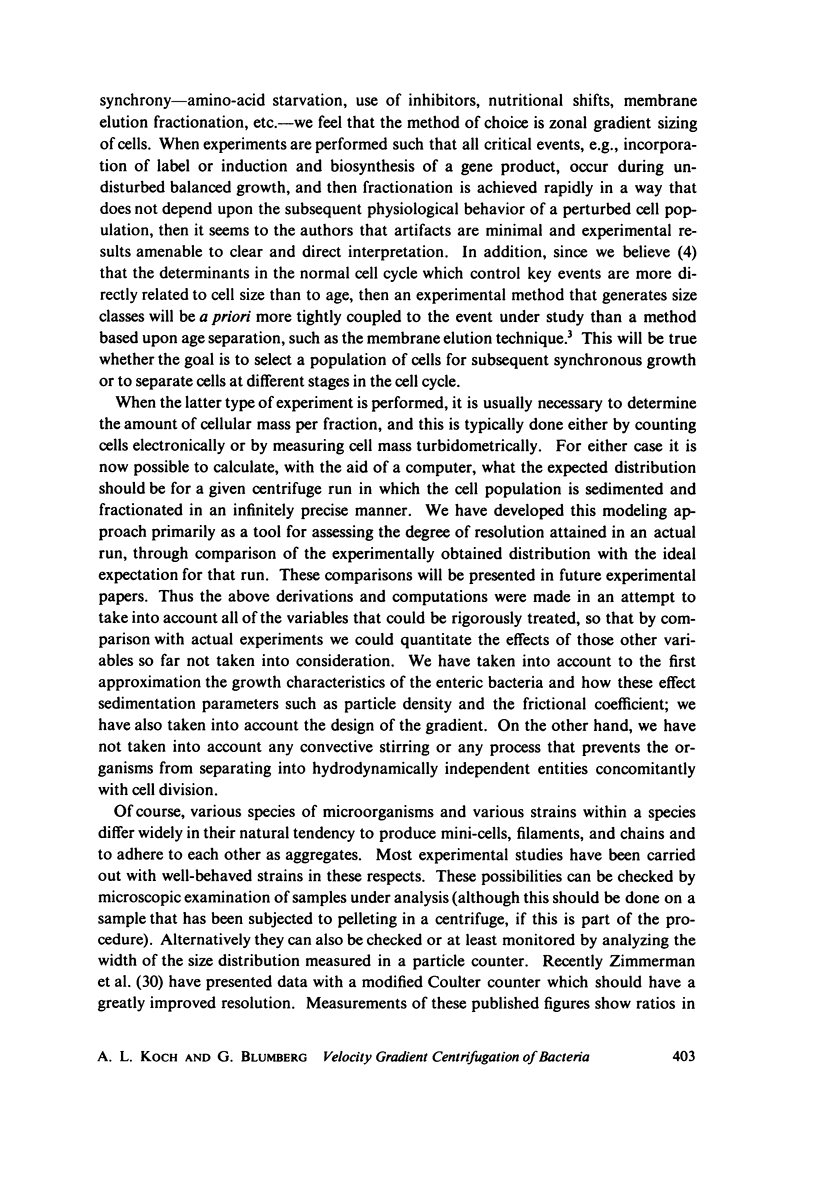

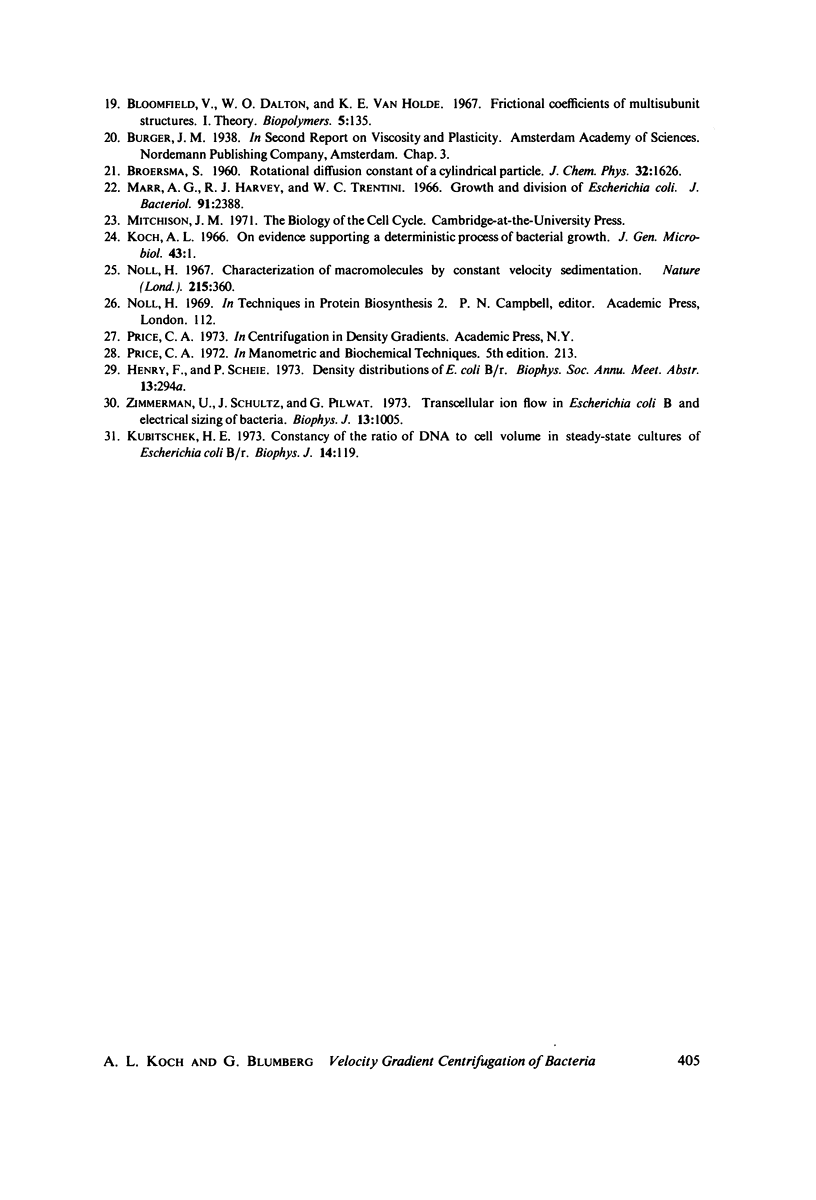
Selected References
These references are in PubMed. This may not be the complete list of references from this article.
- Bloomfield V., Dalton W. O., Van Holde K. E. Frictional coefficients of multisubunit structures. I. Theory. Biopolymers. 1967 Feb;5(2):135–148. doi: 10.1002/bip.1967.360050202. [DOI] [PubMed] [Google Scholar]
- COLLINS J. F., RICHMOND M. H. Rate of growth of Bacillus cereus between divisions. J Gen Microbiol. 1962 Apr;28:15–33. doi: 10.1099/00221287-28-1-15. [DOI] [PubMed] [Google Scholar]
- ERRINGTON F. P., POWELL E. O., THOMPSON N. GROWTH CHARACTERISITICS OF SOME GRAM-NEGATIVE BACTERIA. J Gen Microbiol. 1965 Apr;39:109–123. doi: 10.1099/00221287-39-1-109. [DOI] [PubMed] [Google Scholar]
- Ecker R. E., Kokaisl G. Synthesis of protein, ribonucleic acid, and ribosomes by individual bacterial cells in balanced growth. J Bacteriol. 1969 Jun;98(3):1219–1226. doi: 10.1128/jb.98.3.1219-1226.1969. [DOI] [PMC free article] [PubMed] [Google Scholar]
- Harvey R. J., Marr A. G., Painter P. R. Kinetics of growth of individual cells of Escherichia coli and Azotobacter agilis. J Bacteriol. 1967 Feb;93(2):605–617. doi: 10.1128/jb.93.2.605-617.1967. [DOI] [PMC free article] [PubMed] [Google Scholar]
- KOCH A. L., SCHAECHTER M. A model for statistics of the cell division process. J Gen Microbiol. 1962 Nov;29:435–454. doi: 10.1099/00221287-29-3-435. [DOI] [PubMed] [Google Scholar]
- KUBITSCHEK H. E. Normal distribution of cell generation rate. Exp Cell Res. 1962 Mar;26:439–450. doi: 10.1016/0014-4827(62)90150-7. [DOI] [PubMed] [Google Scholar]
- Kelly C. D., Rahn O. The Growth Rate of Individual Bacterial Cells. J Bacteriol. 1932 Feb;23(2):147–153. doi: 10.1128/jb.23.2.147-153.1932. [DOI] [PMC free article] [PubMed] [Google Scholar]
- Koch A. L. On evidence supporting a deterministic process of bacterial growth. J Gen Microbiol. 1966 Apr;43(1):1–5. doi: 10.1099/00221287-43-1-1. [DOI] [PubMed] [Google Scholar]
- Koch A. L. On the difference between the lethal effects of H3 and P32 in bacteria. Radiat Res. 1966 Sep;29(1):18–32. [PubMed] [Google Scholar]
- Kubitschek H. E. Constancy of the ratio of DNA to cell volume in steady-state cultures of Escherichia coli B-r. Biophys J. 1974 Feb;14(2):119–123. doi: 10.1016/S0006-3495(74)70003-0. [DOI] [PMC free article] [PubMed] [Google Scholar]
- MACLEAN F. I., MUNSON R. J. Some environmental factors affecting the length of Escherichia coli organisms in continuous cultures. J Gen Microbiol. 1961 May;25:17–27. doi: 10.1099/00221287-25-1-17. [DOI] [PubMed] [Google Scholar]
- Marr A. G., Harvey R. J., Trentini W. C. Growth and division of Escherichia coli. J Bacteriol. 1966 Jun;91(6):2388–2389. doi: 10.1128/jb.91.6.2388-2389.1966. [DOI] [PMC free article] [PubMed] [Google Scholar]
- Noll H. Characterization of macromolecules by constant velocity sedimentation. Nature. 1967 Jul 22;215(5099):360–363. doi: 10.1038/215360a0. [DOI] [PubMed] [Google Scholar]
- POWELL E. O. An outline of the pattern of bacterial generation times. J Gen Microbiol. 1958 Apr;18(2):382–417. doi: 10.1099/00221287-18-2-382. [DOI] [PubMed] [Google Scholar]
- Painter P. R. The relative numbers of different genes in exponential microbial cultures. Genetics. 1974 Mar;76(3):401–410. doi: 10.1093/genetics/76.3.401. [DOI] [PMC free article] [PubMed] [Google Scholar]
- SCHAECHTER M., WILLIAMSON J. P., HOOD J. R., Jr, KOCH A. L. Growth, cell and nuclear divisions in some bacteria. J Gen Microbiol. 1962 Nov;29:421–434. doi: 10.1099/00221287-29-3-421. [DOI] [PubMed] [Google Scholar]
- Ubitschek H. E. Linear cell growth in Escherichia coli. Biophys J. 1968 Jul;8(7):792–804. doi: 10.1016/s0006-3495(68)86521-x. [DOI] [PMC free article] [PubMed] [Google Scholar]
- Zimmermann U., Schulz J., Pilwat G. Transcellular ion flow in Escherichia coli B and electrical sizing of bacterias. Biophys J. 1973 Oct;13(10):1005–1013. doi: 10.1016/S0006-3495(73)86041-2. [DOI] [PMC free article] [PubMed] [Google Scholar]


